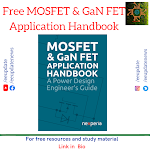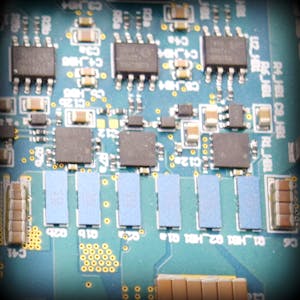Book Review: Switching Power Converters: Medium and High Power (3rd Edition) by Dorin O. Neacsu
Introduction
Power electronics has undergone tremendous evolution over the past few decades, particularly in medium and high-power converter design. The third edition of Switching Power Converters: Medium and High Power by Dorin O. Neacsu provides an updated and comprehensive perspective on converter technologies, topologies, and control methods that shape modern energy conversion systems. This book stands as an advanced reference for engineers, researchers, and graduate students who work in designing or understanding power conversion systems used in industrial drives, renewable energy, and electric vehicles.
Overview of the Book
Dorin Neacsu’s third edition refines and expands on previous versions, emphasizing practical design approaches for power converters while maintaining strong theoretical depth. The book systematically explores medium and high-power switching converters, providing both mathematical modeling and application-oriented insights.
It bridges the gap between circuit-level understanding and system-level performance, ensuring readers can apply theoretical knowledge to real-world designs. The text is enriched with examples, simulation results, and graphical representations to make complex topics accessible.
Key Topics Covered
1. Fundamentals of Power Conversion
The book begins by revisiting switching principles, energy transfer, and basic converter topologies. It offers clear explanations of DC-DC, AC-DC, DC-AC, and AC-AC conversions with focus on efficiency, losses, and dynamic behavior.
2. Medium and High-Power Converter Architectures
One of the strengths of this edition is its detailed treatment of converters designed for hundreds of watts to megawatt-scale systems. It covers:
-
Isolated and non-isolated topologies
-
Modular converter architectures for high-voltage systems
-
Resonant and soft-switching techniques for improved efficiency
3. Control Strategies
A major highlight of Neacsu’s work is the detailed explanation of control techniques:
-
PWM, space vector modulation, and phase-shift control
-
Digital control implementation using DSPs and FPGAs
-
Current-mode and voltage-mode control principles
-
Practical guidelines for closed-loop stability and dynamic performance tuning
The author blends theoretical rigor with practical control considerations, which is vital for professionals designing industrial drives or grid-connected converters.
4. Design and Simulation Examples
The inclusion of MATLAB/Simulink models and design case studies strengthens the book’s applied focus. These examples enable readers to validate theoretical concepts and practice converter design under various operating conditions.
5. Applications
The book links converter theory to major application areas such as:
-
Electric vehicle powertrains
-
Solar and wind power converters
-
Industrial motor drives
-
UPS and data center power systems
-
Smart grid and energy storage integration
This practical relevance makes it a valuable resource for both design engineers and system architects.
What Makes This Book Stand Out
-
Bridges Theory and Practice: Neacsu achieves a fine balance between rigorous analysis and hands-on design considerations.
-
Updated for Modern Technologies: The third edition integrates discussions on wide-bandgap semiconductors (SiC and GaN), digital control, and high-efficiency converter architectures, aligning with current industry trends.
-
Clear Illustrations and Simulations: The graphical clarity and simulation-based learning approach make complex topics easier to grasp.
-
Application-Driven Approach: The strong linkage between fundamental principles and real-world use cases gives readers a complete understanding of how converters are deployed in modern systems.
Who Should Read This Book
This book is ideally suited for:
-
Graduate students in power electronics and electrical engineering
-
Design engineers working on converters, drives, and renewable systems
-
Researchers exploring control techniques or new converter topologies
-
Professionals in energy, transportation, and automation sectors seeking to upgrade their technical foundation
It assumes readers already have a working knowledge of basic power electronics and control theory, making it a perfect intermediate-to-advanced level resource.
Conclusion
Switching Power Converters: Medium and High Power (3rd Edition) by Dorin O. Neacsu stands as a comprehensive and forward-looking guide to understanding and designing efficient, reliable power conversion systems. By combining solid theory, modern practices, and practical insight, this book continues to be a cornerstone reference in the field of power electronics.
For anyone seeking to master the complexities of modern medium- and high-power converters—whether in renewable energy, electric mobility, or industrial automation—this book delivers the clarity, depth, and practical direction needed to excel.


























No comments